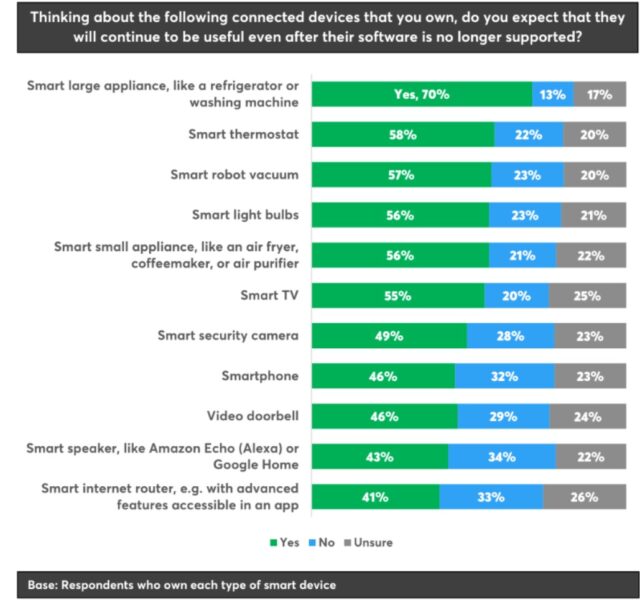“Ironically, ‘it was acting strange,’ is often the only indication a consumer may have that their device has been taken over by a malicious actor. They may see their overall network performance slow down, the device lag, or the device turning off and on at odd times,” the report says.
Consumer Reports also found a significant number of respondents expecting manufacturers to support their gadgets for over 10 years, but we know that’s often not the case.
According to the report, “A lack of awareness around the importance of software updates and what it means when devices lose software support probably contributes to the wide variation of expectations here.”
Consumer Reports also concluded that there’s a lack of understanding of how useful smart devices can be without software support. For example, 55 percent of smart TV owners, 46 percent of smartphone owners, and 43 percent of smart speaker owners surveyed said they think their respective gadget would still be useful if it reached its end of life.

The report points to smart TVs and smartphones losing third-party app support as their OSes stop receiving updates and smart speakers no longer accessing voice assistants if disconnected from the web due to lack of security support. The report’s authors concluded that “a lot of Americans who own smart devices don’t understand the relationship between software support and how long a device might retain its usefulness.”
However, it’s also possible that people have different ideas of what’s considered “useful.” A disconnected smart TV, for instance, could still connect to video game consoles or access streaming apps via a streaming stick. A smart speaker without Alexa can still play audio from a paired device. I asked about this, and Stacey Higginbotham, policy fellow for the tech advocacy team at Consumer Reports, said that the publication believes most consumers wouldn’t use disconnected devices as described.


